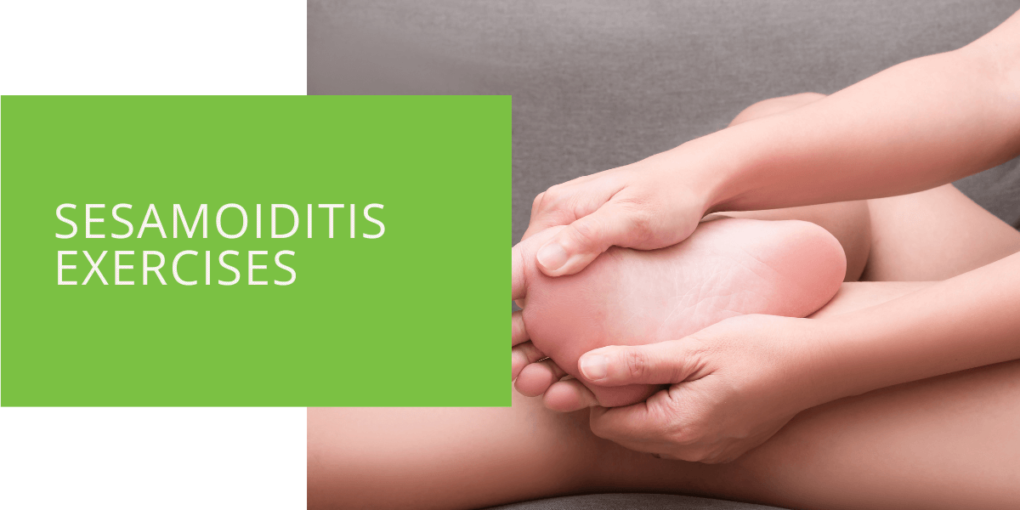Sesamoiditis Exercises
Sesamoiditis is characterized by inflammation and pain in the sesamoid bones located at the ball of the foot, specifically under the big toe joint. While various factors can contribute to its development, incorporating specific exercises into your routine can relieve, improve strength, and promote healing. In this article, we will explore a range of exercises tailored to sesamoiditis, providing you with effective techniques to manage this condition and regain pain-free mobility.
Understanding Sesamoiditis
The sesamoid bones are small, pea-sized bones embedded within tendons. They act as pulleys, providing leverage and protecting the tendons from excessive pressure. However, repetitive stress or injury can lead to inflammation and irritation, causing sesamoiditis. Individuals who engage in high-impact movements, such as running or dancing, are particularly susceptible to this condition. Symptoms include localized pain, swelling, and difficulty bearing weight on the affected foot.
Diagnosing Sesamoiditis
Proper diagnosis is crucial for effective management. A podiatrist will conduct a thorough examination and may order diagnostic tests such as a bone scan or X-ray to evaluate the condition. These imaging techniques can help identify sesamoid fractures or detect signs of inflammation.

The Role of Exercises in Sesamoiditis Management
Exercises are pivotal in managing sesamoiditis by strengthening the foot, relieving stress on the sesamoid bones, and promoting healing. It's essential to consult with a podiatrist or physical therapist to ensure exercises are tailored to your specific needs and limitations. Following their guidance and gradually progressing through the exercises will yield optimal results.
Stretching Exercises for Sesamoiditis
- Plantar Fascia Stretch: Begin by sitting with one leg extended. Using a towel or resistance band, loop it around the ball of your foot, gently pulling it towards you while keeping your knee straight. Hold the stretch for 30 seconds and repeat three times on each foot.
- Calf Stretch: Stand facing a wall with one foot forward and the other foot extended behind you. Lean forward, placing your hands on the wall, and press the heel of the back foot down, feeling a stretch in the calf muscle. Hold for 30 seconds and repeat three times on each leg.
- Toe Flexor Stretch: Sit on a chair with your feet flat on the floor. Cross one leg over the opposite knee and interlace your fingers between your toes, gently pulling them back. Hold for 30 seconds and repeat three times on each foot.
- Arch Stretch: Stand on a step with the balls of your feet on the edge and your heels hanging off. Slowly lower your heels, feeling a stretch in the arches of your feet. Hold for 30 seconds and repeat three times.
Strengthening Exercises for Sesamoiditis
- Toe Curls and Marble Pick-ups: Sit on a chair and place a towel or marbles on the floor. Using your toes, curl them to grip the towel or marbles and lift them off the ground. Hold for a few seconds and release. Repeat ten times on each foot.
- Short Foot Exercise: Sit with your feet flat on the floor. While keeping your toes relaxed, attempt to lift the arches of your feet by pressing the ball of your foot downward. Hold for a few seconds and release. Repeat ten times on each foot.
- Ankle Circles and Alphabet Exercises: Sit on a chair with one leg extended. Rotate your ankle in a circular motion, first clockwise and then counterclockwise. Repeat ten times in each direction. Additionally, write the alphabet with your toes, moving your foot in a controlled manner to form each letter. Repeat the exercise with the other foot.

Additional Tips for Sesamoiditis Management
In addition to exercises, several lifestyle adjustments can help manage sesamoiditis effectively:
- Proper Footwear: Opt for shoes with ample arch support, cushioning, and a wide toe box. Avoid high heels or shoes that put excessive pressure on the ball of the foot.
- Activity Modification: Avoid activities that exacerbate sesamoiditis pain, such as high-impact sports or activities that involve repetitive pressure on the forefoot.
- Orthotic Support: A podiatrist may recommend orthotic inserts or padding to provide additional support and alleviate pressure on the sesamoid bones while walking or standing.
- Rest and Ice Therapy: Take regular breaks and elevate your foot to reduce inflammation. Applying ice wrapped in a thin cloth for 15-20 minutes several times daily can help alleviate pain and swelling.
When to Seek Professional Help
While exercises and self-care measures can often provide relief, it's crucial to seek professional help when:
- The pain persists or worsens despite conservative measures.
- There is severe swelling or bruising in the affected area.
- Difficulty walking or bearing weight on foot.
- The pain interferes with daily activities or significantly impacts the quality of life.
A podiatrist can evaluate your condition, provide a proper diagnosis, and offer additional treatment options such as physical therapy, medications, or, in rare cases, surgical intervention.
Conclusion
Sesamoiditis can be a challenging condition that affects the ball of the foot, causing pain and discomfort. However, with a comprehensive approach that includes targeted stretching and strengthening exercises and lifestyle modifications, individuals can find relief and regain functionality. Consult a podiatrist for an accurate diagnosis and personalized guidance on incorporating exercises into your sesamoiditis management plan. By committing to a consistent exercise routine and implementing other recommended strategies, you can overcome sesamoiditis and enjoy a pain-free and active lifestyle again.

